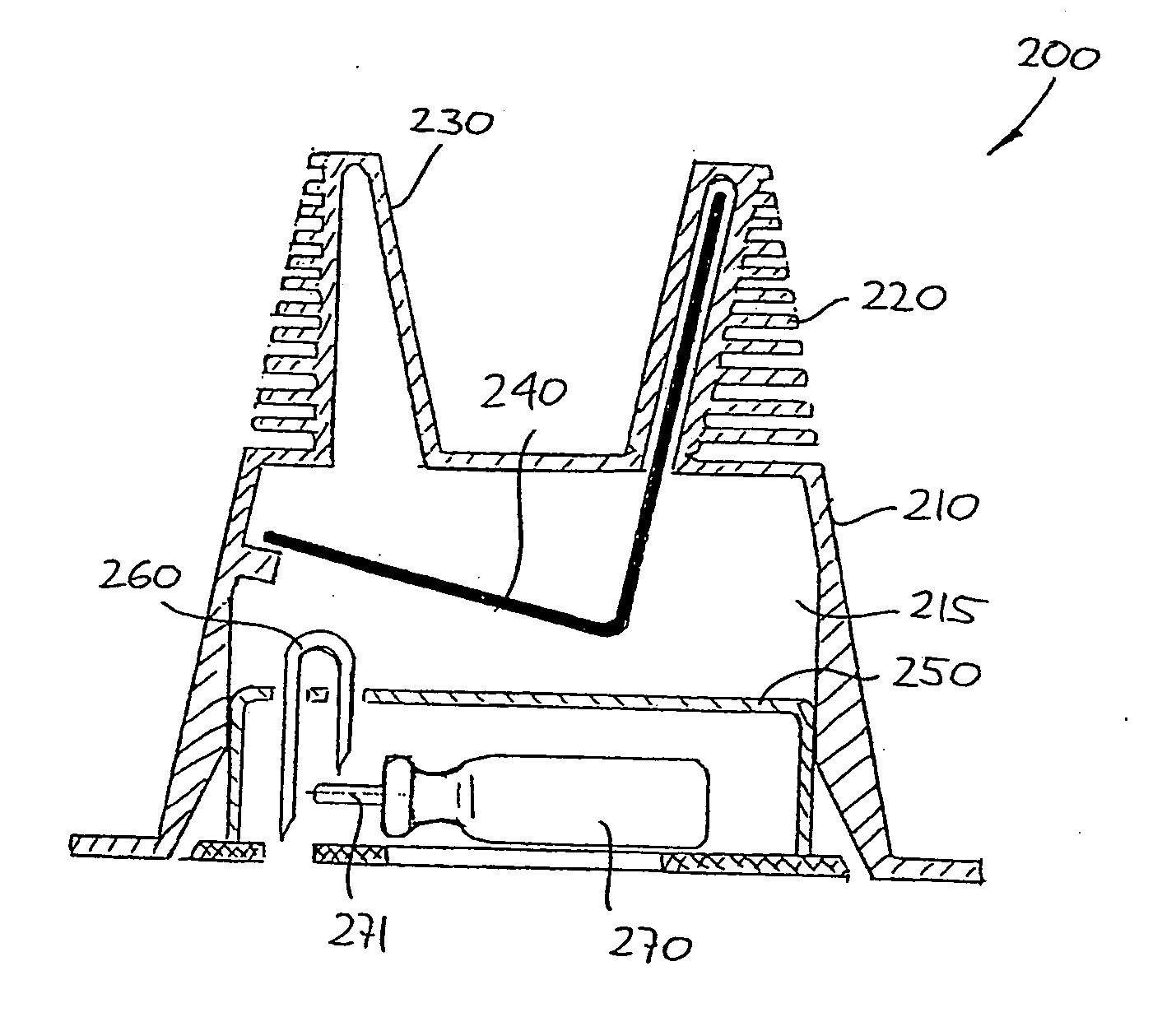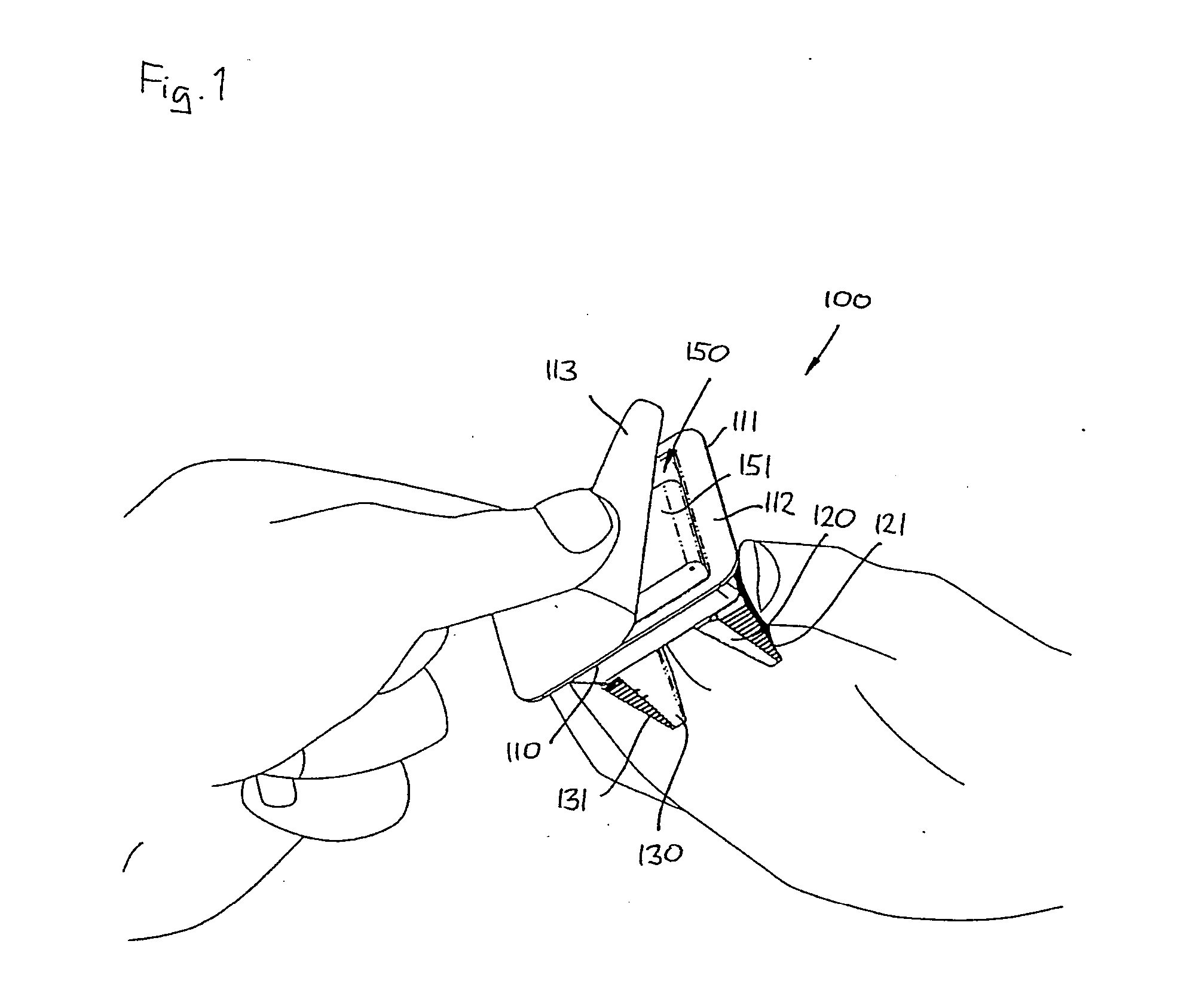External inserter for transcutaneous device
a transcutaneous device and inserter technology, applied in the field of external inserters for transcutaneous devices, can solve the problems of increasing the complexity and bulkiness of the device, affecting the effect of manufacturing cost, and often affecting the actual user-performed piercing of the tissue with the needle, etc., and achieve the effect of cost-effective manufacturing
- Summary
- Abstract
- Description
- Claims
- Application Information
AI Technical Summary
Benefits of technology
Problems solved by technology
Method used
Image
Examples
first embodiment
[0060] More specifically, FIG. 1 shows a medical device 100 gripped by a user. The medical device comprises a second unit 110 with a housing defining an interior space, and a first unit 150 releasably attached within the interior space. In the following the second unit will also be termed the “inserter”. The housing comprises a main portion with a lower opening surrounded by a circumferential flange 111 extending away from the housing, the flange having a lower surface 112 defining a general plane for the medical device. The housing further comprises first and second upwardly protruding actuation members (or handling members) 120, 130 arranged on the upper portion of the housing opposite the opening, the actuation members comprising ribbed portions 121, 131 allowing for easy gripping by a user, e.g. using the first and second fingers as shown. The first unit is in the form of a needle device (e.g. an infusion device or a sensor device) comprising an adhesive mounting surface 151 ada...
second embodiment
[0067] In FIG. 6B is shown an alternative configuration 200′ of the second embodiment in which the needle device 250′ is only partially arranged within the housing 210′, the surrounding flange and the foil sheet correspondingly being omitted. Further, the inserter comprises protrusions 245, 246 in engagement with corresponding depressions on the housing portion of the needle device thereby serving as a releasably attachment means between the two units. As appears, this configuration requires an additional packaging but is otherwise similar to the embodiment of FIG. 6A.
[0068] In the first and second embodiments the needle was moveably attached relative to the mounting surface, thereby providing the relative movement between the needle and the mounting surface and thereby the skin surface, however, the relative movement between the needle and the skin surface may also be provided by using the driving means to move a needle device comprising a protruding needle into contact with the sk...
PUM
 Login to View More
Login to View More Abstract
Description
Claims
Application Information
 Login to View More
Login to View More - R&D
- Intellectual Property
- Life Sciences
- Materials
- Tech Scout
- Unparalleled Data Quality
- Higher Quality Content
- 60% Fewer Hallucinations
Browse by: Latest US Patents, China's latest patents, Technical Efficacy Thesaurus, Application Domain, Technology Topic, Popular Technical Reports.
© 2025 PatSnap. All rights reserved.Legal|Privacy policy|Modern Slavery Act Transparency Statement|Sitemap|About US| Contact US: help@patsnap.com



